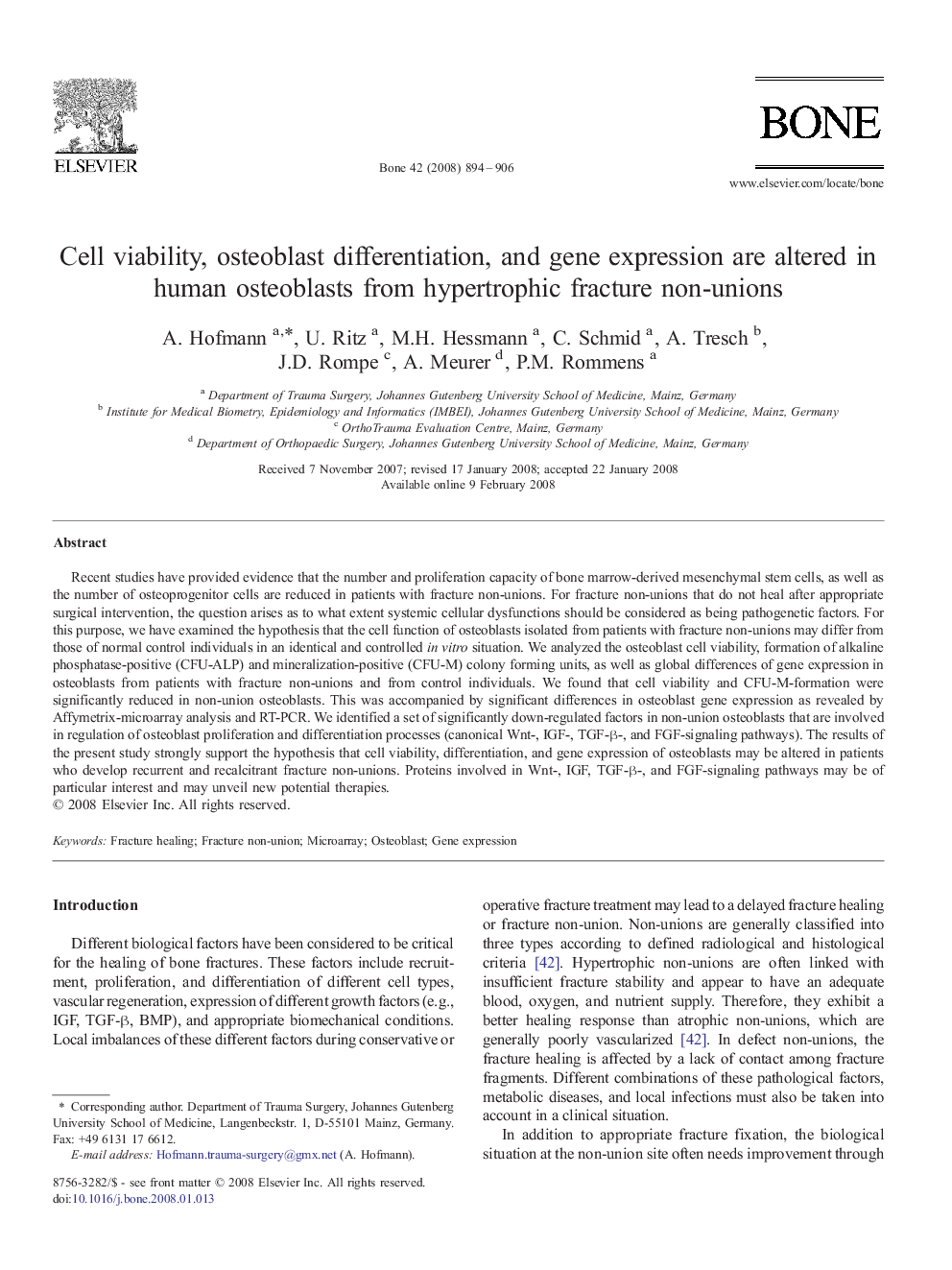| Article ID | Journal | Published Year | Pages | File Type |
|---|---|---|---|---|
| 2781378 | Bone | 2008 | 13 Pages |
Recent studies have provided evidence that the number and proliferation capacity of bone marrow-derived mesenchymal stem cells, as well as the number of osteoprogenitor cells are reduced in patients with fracture non-unions. For fracture non-unions that do not heal after appropriate surgical intervention, the question arises as to what extent systemic cellular dysfunctions should be considered as being pathogenetic factors. For this purpose, we have examined the hypothesis that the cell function of osteoblasts isolated from patients with fracture non-unions may differ from those of normal control individuals in an identical and controlled in vitro situation. We analyzed the osteoblast cell viability, formation of alkaline phosphatase-positive (CFU-ALP) and mineralization-positive (CFU-M) colony forming units, as well as global differences of gene expression in osteoblasts from patients with fracture non-unions and from control individuals. We found that cell viability and CFU-M-formation were significantly reduced in non-union osteoblasts. This was accompanied by significant differences in osteoblast gene expression as revealed by Affymetrix-microarray analysis and RT-PCR. We identified a set of significantly down-regulated factors in non-union osteoblasts that are involved in regulation of osteoblast proliferation and differentiation processes (canonical Wnt-, IGF-, TGF-β-, and FGF-signaling pathways). The results of the present study strongly support the hypothesis that cell viability, differentiation, and gene expression of osteoblasts may be altered in patients who develop recurrent and recalcitrant fracture non-unions. Proteins involved in Wnt-, IGF, TGF-β-, and FGF-signaling pathways may be of particular interest and may unveil new potential therapies.
